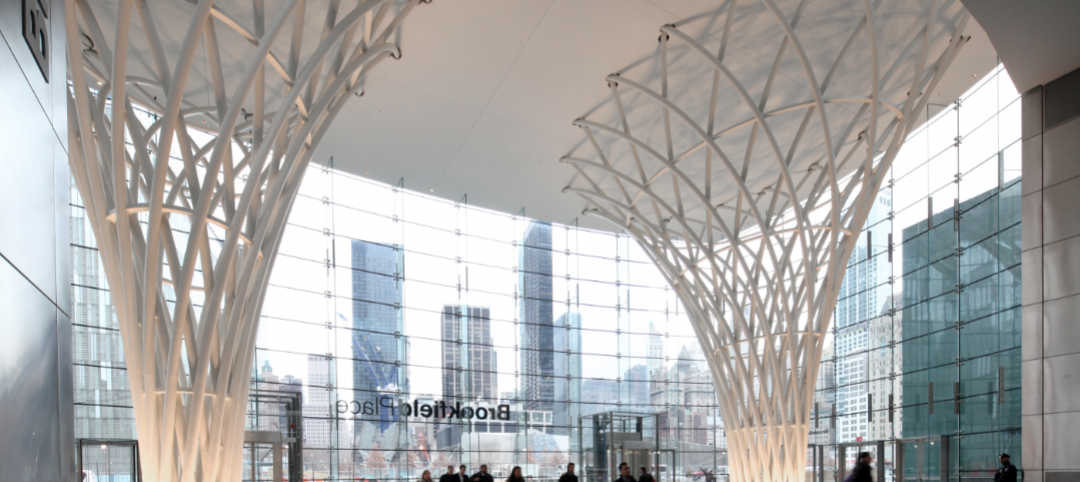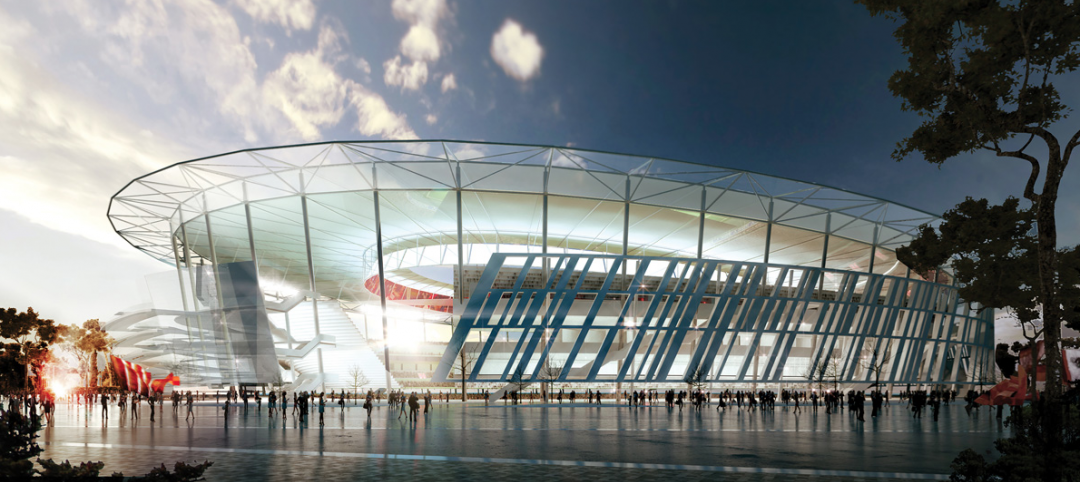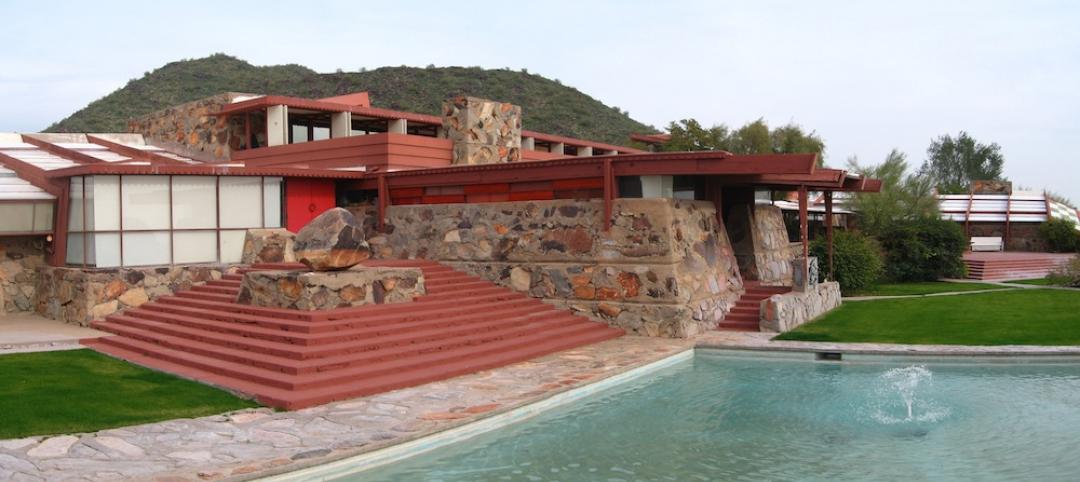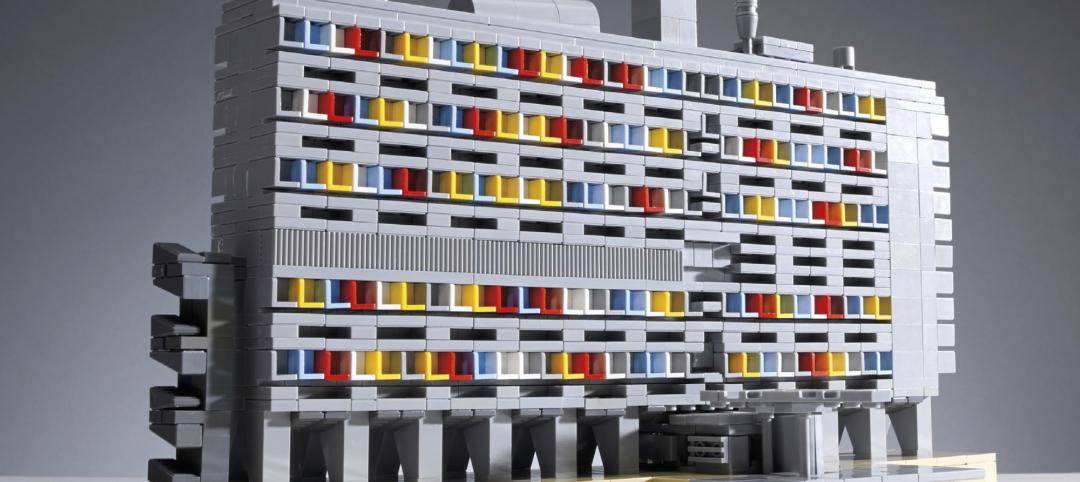At Greenbuild 2012, education and sustainability took center stage with the arrival of the SAGE modular classroom, designed and built by a team from Oregon. The demonstration facility, which was on display November 13-15 at the Moscone Center in San Francisco, was conceived and co-sponsored by Building Design+Construction and its parent organization, SGC Horizon LLC.
The genesis of the project came from the Department of Architecture at Portland (Ore.) State University, in particular Assistant Professor Margarette Leite. In examining the role of architecture in education spaces, she and her students recognized a growing need for sustainably designed classrooms nationwide.
While modular classrooms—or “portables,” as they’re commonly known—have been around for decades, some practitioners in the modular building industry feel they have not been used to their full potential. “School district administrators typically look at this kind of space as a temporary fix,” says Garth Haakenson, President/CEO of Pacific Mobile Structures, Chehalis, Wash. “But the reality is that these buildings stay up for 20 to 30 years. When they’re built to a minimum standard and not maintained over that time period, the quality of the classroom deteriorates and you have kids learning in a substandard environment.”
SETTING OUT ON A MISSION
With that historical background in mind, Leite and her students set about changing the design of modular classrooms—to create sustainably designed, factory-built classrooms that were good for children’s health and well-being, but also practical. “The only way to do that is to find a way to keep it affordable for school districts,” she said.
As the project began to pick up steam, the staff of Oregon Governor John Kitzhaber stepped in. The modular classroom was named an official “Oregon Solutions” project. This program, established in 2011, promotes “sustainable solutions to community-based problems that support economic, environmental, and community objectives, and are built through the collaborative efforts of businesses, government, and nonprofit organizations.”
With the governor’s backing secured and the project becoming more and more of a reality, the team grew to include Portland State’s College of Engineering, and Institute for Sustainable Solutions, in conjunction with AIA Portland. There was just one problem—the team didn’t have a buyer for the proposed classroom. “We were going to try and raise money for it if we had to,” said Leite. “Luckily a buyer stepped in and made it happen pretty quickly.”
That buyer was Haakenson and Pacific Mobile Structures, which has a branch in Oregon City, near Portland. With funding secured, modular builder Blazer Industries, Aumsville, Ore., got to work. “I think it was October 5 or so that we actually started construction,” said Kendra Cox, Blazer Industries’ Project Manager. “The building shipped [to San Francisco] November 9. We were working on the design, working on the pricing, every single last-minute item. It was pretty hectic.”
They called it SAGE, for Smart Academic Green Environment. The SAGE modular classroom came in at $77 a square foot in construction costs, about half that for conventionally designed and constructed “portables,” proving that sustainability and affordability were not incompatible.
THE CLASSROOM AS TEACHING TOOL
The shortage of high-quality classrooms is a national problem, said Sergio Palleroni, Professor of Architecture at Portland State and chief designer of the SAGE classroom. “Coming to the Greenbuild conference, everybody was feeling, ‘OK, we’re having this national crisis, what do we do about it?’” said Palleroni, a Senior Fellow at PSU’s Center for Sustainable Solutions and a founder and faculty member of the federally funded Green Building Research Lab.
While the entire Building Team was excited about the generous feedback they received from Greenbuild attendees while the classroom was on display at Moscone, they were equally interested in the goal of opening people’s eyes to the potential of mobile classrooms.
Haakenson said it was important to get AEC professionals and the public to see that mobile structures could be more than portable classrooms. “There are a lot of interesting features about this structure that are completely different than anyone’s previous expectations of a portable classroom,” he says. Changing the stereotype of the modular classroom was a key component of the SAGE team’s strategy.
TAKING THE CONCEPT TO THE NEXT LEVEL
With a strong first showing at Greenbuild behind them, the team now hopes that this is just the start of a revolution in the creation of sustainably designed and constructed modular classrooms.
“There’s a lot of interest nationwide, so the next step is to start addressing requests from other states and figure out how to find manufacturers and contractors that believe in the project,” said Blazer Industries’ Cox.
Portland State’s Leite recommends that future modular classroom Building Teams collaborate early and often. “A lot of projects don’t make it because they’re not efficient to build, so they become too expensive,” she says. “That’s why it’s important to start working together right from the beginning.” +
Related Stories
Giants 400 | Aug 5, 2015
ENGINEERING GIANTS: Profits, revenue on the rise at U.S. engineering firms as economy sputters back to life
The vast majority of engineering firms are decidedly bullish on revenue growth for 2015, and profitability is nearing a six-year high, according to BD+C's 2015 Giants 300 report.
Giants 400 | Aug 4, 2015
GIANTS 300 REPORT: Top 64 Architecture/Engineering Firms
Stantec, HOK, and Callison RTKL top Building Design+Construction's 2015 ranking of the largest architecture/engineering firms in the United States.
Giants 400 | Aug 4, 2015
GIANTS 300 REPORT: Top 106 Architecture Firms
Gensler, Perkins+Will, and Kohn Pedersen Fox top Building Design+Construction's 2015 ranking of the largest architecture firms in the United States.
Giants 400 | Aug 4, 2015
ARCHITECTURE GIANTS: 21 practice management innovations from architecture Giants
Design firms have gone all out with management innovations in the last year. Check out which ones might work for your firm.
Architects | Aug 4, 2015
Frank Lloyd Wright School of Architecture closer to independent incorporation
The school is halfway to its first fundraising milestone, but is facing a major deadline at end of this month.
Industrial Facilities | Aug 3, 2015
Architect Jacques Rougerie envisions floating city to function as roving laboratory
The manta ray-shaped vessel will be completely self-sustaining, run on marine energy, and produce no waste.
Cultural Facilities | Aug 3, 2015
Funding needed for Washington's Desert Storm memorial
The National Desert Storm Memorial Foundation has a $25 million goal for the project.
Sports and Recreational Facilities | Jul 31, 2015
Zaha Hadid responds to Tokyo Olympic Stadium controversy
“Our warning was not heeded that selecting contractors too early in a heated construction market and without sufficient competition would lead to an overly high estimate of the cost of construction,” said Zaha Hadid in a statement.
Architects | Jul 30, 2015
The Lego Architect: Book offers simple how-to steps for recreating iconic buildings with Legos
The book features famous buildings accompanied with a photograph and drawing of the Lego model of the building, and a list of all the Lego pieces needed to complete a model of the building.
Transit Facilities | Jul 30, 2015
Snøhetta designs ring-shaped cable car station in Italian Alps
In Snøhetta’s design, two cylindrical rings embedded into the existing topography, each at different elevations, will be connected by a cable car. During the minute-long cable car journey, passengers can enjoy views of the city and of the Italian Alps.

















